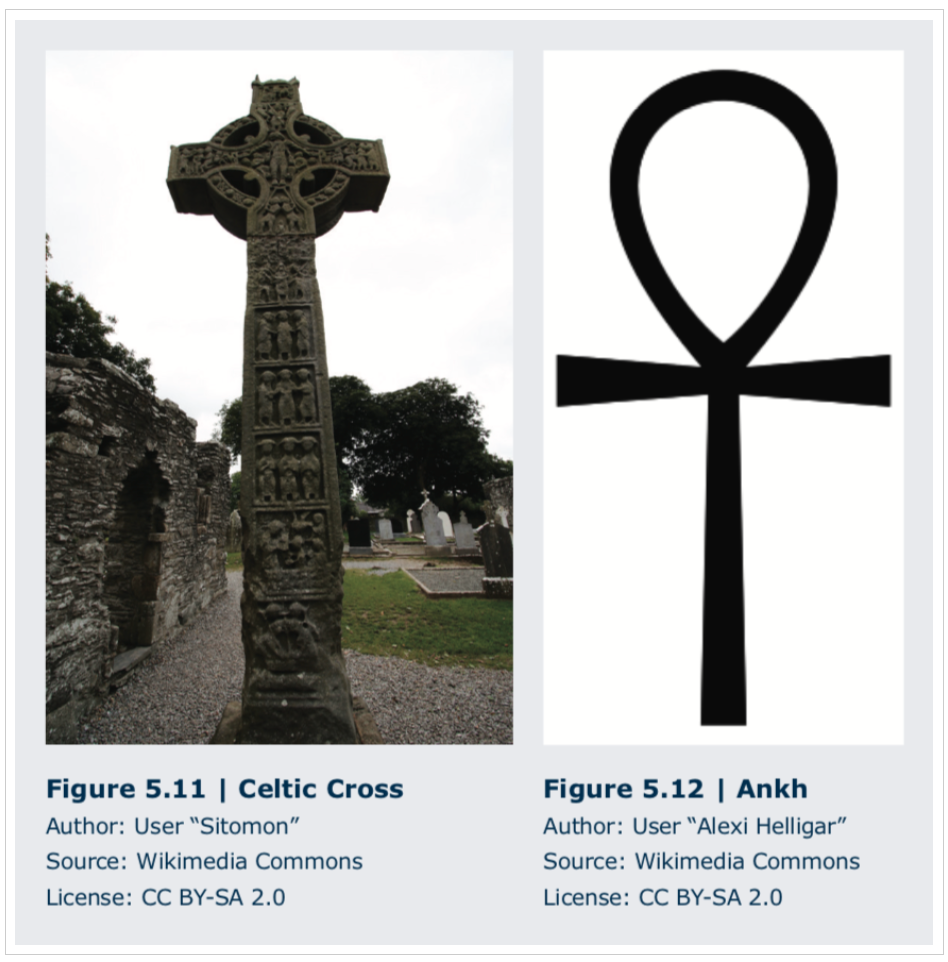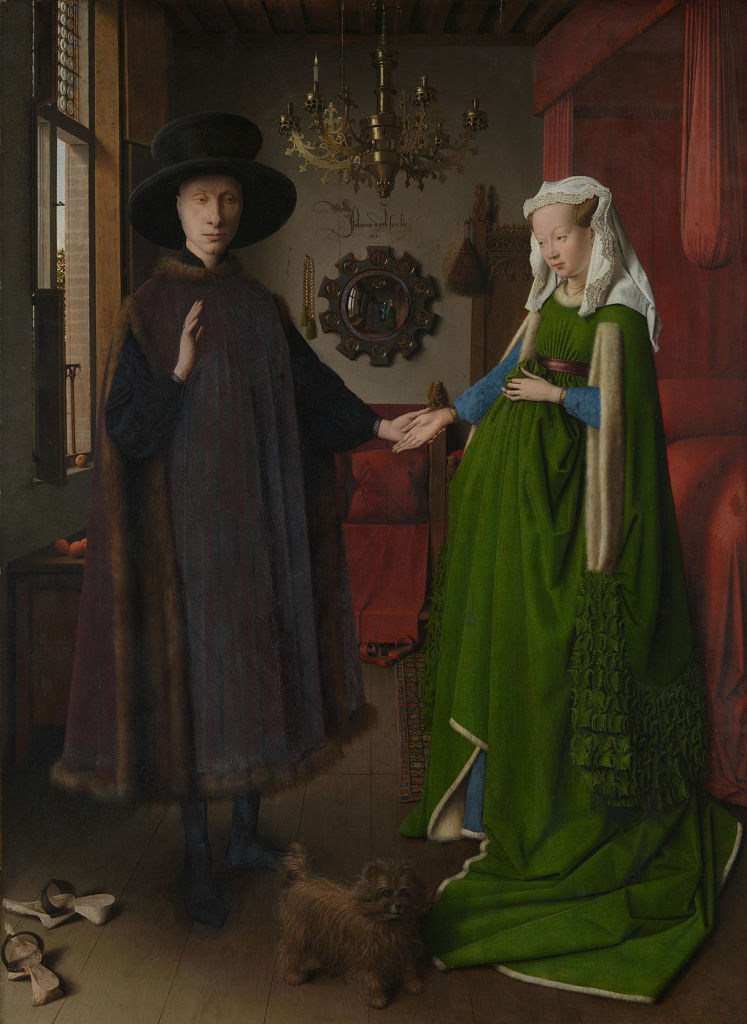1.4: Symbolism and Iconography
- Page ID
- 156838
\( \newcommand{\vecs}[1]{\overset { \scriptstyle \rightharpoonup} {\mathbf{#1}} } \) \( \newcommand{\vecd}[1]{\overset{-\!-\!\rightharpoonup}{\vphantom{a}\smash {#1}}} \)\(\newcommand{\id}{\mathrm{id}}\) \( \newcommand{\Span}{\mathrm{span}}\) \( \newcommand{\kernel}{\mathrm{null}\,}\) \( \newcommand{\range}{\mathrm{range}\,}\) \( \newcommand{\RealPart}{\mathrm{Re}}\) \( \newcommand{\ImaginaryPart}{\mathrm{Im}}\) \( \newcommand{\Argument}{\mathrm{Arg}}\) \( \newcommand{\norm}[1]{\| #1 \|}\) \( \newcommand{\inner}[2]{\langle #1, #2 \rangle}\) \( \newcommand{\Span}{\mathrm{span}}\) \(\newcommand{\id}{\mathrm{id}}\) \( \newcommand{\Span}{\mathrm{span}}\) \( \newcommand{\kernel}{\mathrm{null}\,}\) \( \newcommand{\range}{\mathrm{range}\,}\) \( \newcommand{\RealPart}{\mathrm{Re}}\) \( \newcommand{\ImaginaryPart}{\mathrm{Im}}\) \( \newcommand{\Argument}{\mathrm{Arg}}\) \( \newcommand{\norm}[1]{\| #1 \|}\) \( \newcommand{\inner}[2]{\langle #1, #2 \rangle}\) \( \newcommand{\Span}{\mathrm{span}}\)\(\newcommand{\AA}{\unicode[.8,0]{x212B}}\)
Overview
- Symbolism refers to the use of specific figural or naturalistic images or abstracted graphic signs that hold shared meaning within a group.
- Iconography is the broader study and interpretation of subject matter and pictorial themes in a work of art.
Symbolism:

- A symbol is an image or sign that is understood by a group to stand for something.
- The symbol, however, does not have to have a direct connection to its meaning. For example, the letters of the alphabet, which are abstract graphic signs, are understood by those who use them to have individual sounds and meanings. The users have assigned meaning to them, as letters have no meaning in and of themselves. An example of a naturalistic image is a rose, which in most Western civilizations symbolizes love. When one person gives a rose to another, it is a symbol of the love the person feels.
- While a symbol might have a common meaning for a certain group, it might be used with variations by or hold a different significance for other groups. Let us use the example of a cross.
- At its core, a cross is a simple intersection of vertical and horizontal lines that could refer to the meeting of celestial and terrestrial elements or forces or could lend itself to other variations of meaning.
- The cross most frequently associated with Christianity is the Latin Cross, with the long vertical bar intersected by a shorter horizontal one believed by many to be the form of the cross upon which Jesus Christ, the central figure of the faith, was crucified. (Variants of the Cross: wpmedia.vancouversun.com/2010...6.crosses1.png) But its simplicity of conception lends itself to various other readings, as well, and in pre-Christian use, it was related to sacred and cosmic beliefs.
- Within Christian usage, the cross has taken a great number of different forms, including the equal-armed Greek Cross, favored by the Byzantine Christians; Celtic crosses, with a circular addition to the crossing; X’s and upside-down crosses associated with specific Christian martyrs, individuals who died for their faith, on such instruments of torture; and many others. (Figure 5.11)
- The Ankh, another cross form, with a looped handle, seems to have been devised by the ancient Egyptians as a symbol of the life-giving power of the Sun. (Figure 5.12)
- Clearly, many other symbols have various meanings, especially when they are represented as more abstract graphic signs. To read their implications in any particular application will require your considering where it was made and for what specific purposes, as well as how it might have been adopted and turned to different use at that time or later
Iconography:

Jan van Eyck, Arnolfini Portrait, 1434, oil on canvas. Work is in the public domain.
- Iconography includes implied meanings and symbolism that are used to convey the group’s shared experience and history—its familiar myths and stories.
- Iconography refers to the symbols used within a work of art and what they mean, or symbolize. For example, in different cultures, a snake may stand for evil, temptation, wisdom, rebirth, or the circle of life.
- A depiction of a snake in a scene with Adam and Eve has specific meanings for those of the Christian faith or others who understand the snake stands for temptation within the context of that subject or story. In Chinese culture, however, a snake represents the power of nature and is said to bring good fortune to those who practice the snake’s restraint and elegance of movement.
- Jan van Eyck’s painting, Giovanni Arnolfini and his wife Giovanna Cenami, from 1434, is often used as a prototype example for iconographic analysis, and the conflicts that arise within it. As a painter, Van Eyck was revered for his incredible ability to mimic realism and the effects of light. The painting’s many symbols, some of Christian origin, have been a source of some debate. It was widely accepted as a painting representing a marriage, but recent controversy suggests it is more a record of engagement than a wedding portrait. In van Eyck’s time, a woman laying her hands in the palm of a male, as she so conspicuously does in the painting, was understood to be an agreement to wed (Sayre 35). Above the mirror in the center of the background are the words “Jan van Eyck has been here, 1434.” To contemporary ears this almost sounds like a bit of playful graffiti, but it also clearly establishes the painter as a witness to the event being painted (Sayre 35).
Sources
- Sayre, Henry. A World of Art, Sixth edition. Boston: Prentice Hall, 2010. Print.
- Pamela Sachant, Peggy Blood, Jeffery LeMieux, & Rita Tekippe University System of Georgia via GALILEO Open Learning Materials

